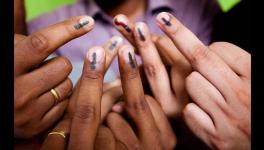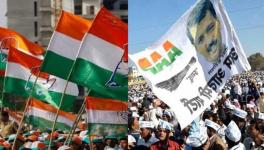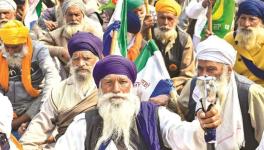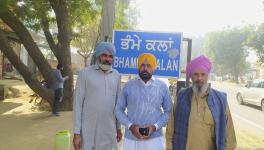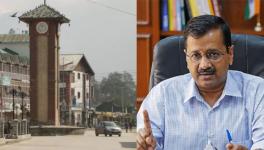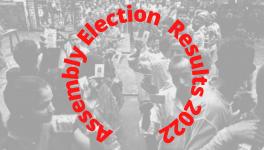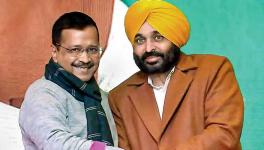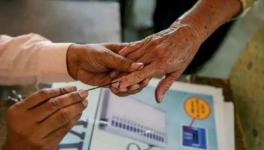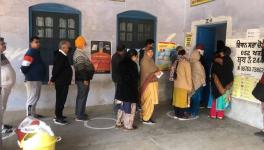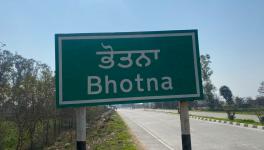Punjab Elections: Three Regions; Five-Cornered Contest
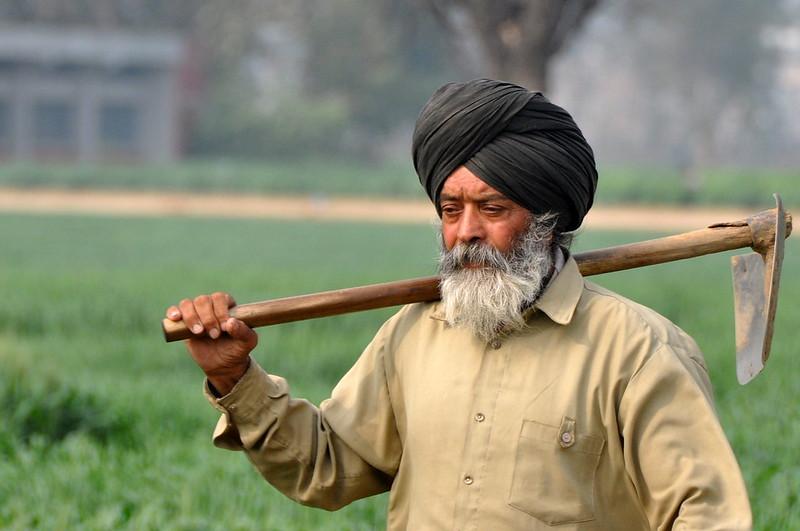
Farmer from the village of Ludhiana in Punjab India. Photo Credit: Climate Change, Agriculture and Food Security
Punjab is one of the five states that go into elections this month. However, the state has been on the national and global radar, especially during the farmer’s struggle last year, which saw huge participation from Punjab farmers. So much so, that some farmer organisations from the state even formed a political party to fight the upcoming Assembly elections.
Meanwhile, as in most elections, speculations are rife about the outcomes this time round as several new events have taken place. Will incumbency weigh down Congress’ chances? Will Aam Aadmi Party build on its last performance (it emerged as the key Opposition party)? How will Bharatiya Janata Party fare, away from its old ally Shiromani Akali Dal, and with a new friend Captain Amarinder Singh? Will the newly launched Sanyukt Samaj Morcha (SSM) by farmers upset equations? To understand Punjab’s political dynamics, one needs to delve deeper into three different regions -- Majha, Malwa and Doaba -- to study how these are likely to impact the voting pattern.
The word `Punjab’ literally translates to ‘Panj’ (five) and ‘Aab’ (sources of water), and is known as the ‘land of five rivers’ — Sutlej, Beas, Ravi, Chenab and Jhelum. The state is divided into three key regions — Majha, Malwa and Doaba — broadly carved by three of these rivers.
Going from West to East, the Majha region falls between rivers Ravi and Beas. Doaba is the land between two rivers (do aab), which starts from the Beas and goes on till Sutlej. Beyond the Sutlej lies the Malwa region. Each region has its own economic, social and political identity. Till about 30-35 years ago, the regions had very distinct dialects though this has narrowed down considerably. The state has a total of 117 Assembly seats, Malwa has 69, Majha has 25 and Doaba has 23.
Read Also: Punjab yet to see Strong SC Leaders Despite 32% Dalit Population: Prof Ronki Ram
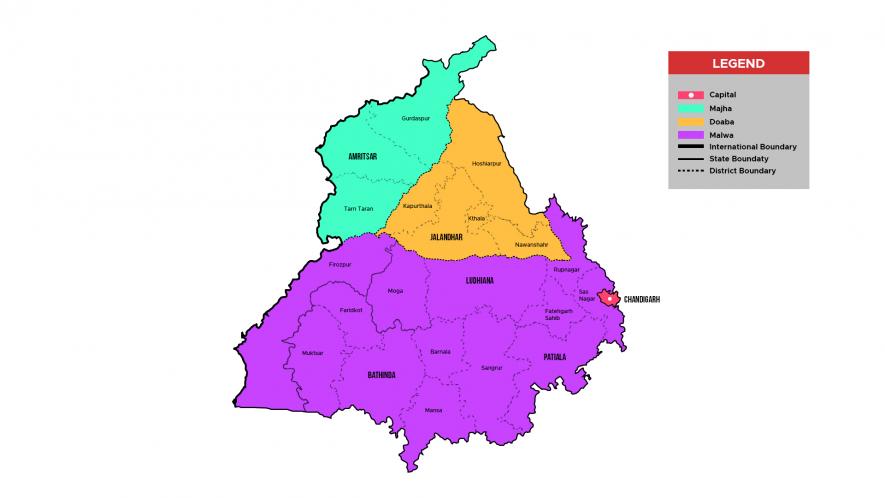
Malwa
The biggest region of the state -- Malwa -- consists of 16 districts with 69 Assembly seats. But for two, all chief ministers in the state have come from this politically active and rich region, which is referred to as the zamindari and activism belt. The region has big landlords and big money, including with politicians and industrialised districts, like Ludhiana and Bhatinda. This has also made it a home to in-migration.
The region has had a history of struggles for various rights. The Kisan Sabha and Communist Party-led land tenurial agitation culminated in the Land Ceiling Act in the post-Independence period. The Bharatiya Kisan Union - Ugrahan group has a strong base in the Malwa belt and was able to influence and organise farmers, who participated in the year-long agitation at Delhi’s borders.
The region, the first to get a `canal’ system during British rule also became infamous because of maximum farmer suicides and the lowest literacy in the state in Mansa district of southern Malwa. Today, the region is significant in the state’s politics, and as aptly stated by Prof Jagroop Sekhon: “Each political party wants to win Malwa”.
Majha
This is the region where politics and religion overlap. Majha is home to the Golden Temple in Amritsar and the Kartarpur Corridor that connects the state to Gurdwara Darbar Sahib in Pakistan, both important places of worship for the Sikh community. It is also known as the birthplace of Sikhism and as the Panthic belt of Punjab (‘Panth’, in Punjabi, means path, and in the religious sense it would mean path chosen by the Guru). Being the border region, it faces additional challenges, such as of smuggling and cross-border tension.
Electorally, Manjha has 25 Assembly seats. An interesting feature of this region is that it has always voted for one party, giving it a majority, or in other words, the elections here tend to get uni-directional but this direction changes in every election (2012 being an exception).
This might change in the upcoming elections, as told to Newsclick by Prof. Ronki Ram, former Dean (Faculty of Arts), Shaheed Bhagat Singh Chair Professor of Political Science, Panjab University. He said: “About 18-20% of votes in Majha are votes of change. However, this time, a major chunk of these votes might go to the Sanyukt Samaj Morcha, the farmers’ body fighting elections.”
He said the change also means that some in the region will root for AAP though many people believe that people are likely to opt for local options rather than the ‘outsider AAP’.
This sentiment of AAP being an `outside party’ resonates with the views of one of the SSM candidates Anuroop Kaur, who said her fight was against both the rivayati (SAD or the local party) and vilayati (AAP, outsider party) parties.
Doaba
Doaba is the smallest region between the two rivers Sutlej and Beas with only 23 Assembly seats. It has fertile land and has benefited the most during the Green Revolution in Punjab, though dependence on land is very low, unlike the other two regions. Migration in Punjab started first in the Doaba region after the Gaddar Party movement of 1913. Since then the region has grown so much. It is also known as the NRI belt with very high out-migration.
According to the 2011 Census, Scheduled Castes (SCs) form around 32% of Punjab’s population, the highest in the country. The region has the highest proportion of SC (37.4%), in comparison to Malwa (31.3%) and Majha (29.3%).
Read Also: Why Everyone in Punjab loves a Dalit CM
Another important factor in Doaba is that it is the birthplace of the Ad Dharm movement in 1926, started by Babu Mangu Ram Mugowalia, to intensify its demand from the Brtish rulers to get a separate religion for SCs. In 1931, the British government notified Ad Dharm as an exclusive religion of the lower castes. Consequently, 418,789 lower castes reported as Ad Dharmi in the 1931 Punjab Census. These people are followers of Guru Ravi Das and have formed the Ravi Das Dera religious centre) not just for spiritual reasons but also for building their social capital. It is the largest dera in the state.
Prof Ram said “SCs in the other regions of Punjab take encouragement from SCs in Doaba”, which make she region very attractive during the elections, with all political parties eyeing SC votes.
All three regions with their distinct characteristics vote differently but the overall trend since the 1969 Assembly polls has been that the state governments have changed every election barring in 2012 when SAD + BJP were re-elected. So, what is likely to happen this time round?
Prof. Sekhon feels that this time two things stand out: a) As always, political parties are making promises to woo the voters but for the voter the issues of last elections have only gotten amplified. Unemployment, economic distress, drugs, agriculture stress continue to bother the voters and they feel more exasperated by the continuing challenges of transport, alcohol, drugs, cartels; b) This time round, it is a five cornered contest and anyone could gain. Parties like SSM will cut into the vote share of Akali Dal, AAP and to some extent, Congress. So, the outcome of the election on March 10, is keenly awaited.
Get the latest reports & analysis with people's perspective on Protests, movements & deep analytical videos, discussions of the current affairs in your Telegram app. Subscribe to NewsClick's Telegram channel & get Real-Time updates on stories, as they get published on our website.









